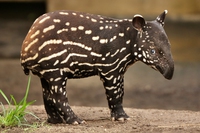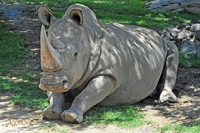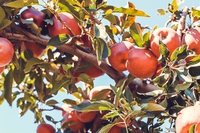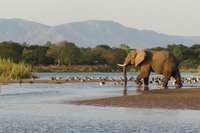
Brazil, a tapir is born in the Atlantic Forest for the first time in over a century
The tapir was reintroduced into Brazil’s Atlantic Forest, the country’s most at-risk ecosystem. The species can play a key role in the forest’s recovery.
The tapir was reintroduced into Brazil’s Atlantic Forest, the country’s most at-risk ecosystem. The species can play a key role in the forest’s recovery.
One of Africa’s last and largest “tuskers”, Tim the elephant, died from natural causes after roaming Amboseli National Park for five decades and surviving multiple life-threatening attacks.
Grazie ai crescenti sforzi del governo, nel 2019 il numero di rinoceronti uccisi è calato a 594, contro i 769 del 2018.
The disappearance of 160 species has been declared by the IUCN over the last decade: most had been gone for a long time and their demise can be traced in large part to human impact. The full list of extinct species.
Traditional orchards are ancient though often neglected sources of food, culture and well-being for people, as well as havens for wildlife. Conservation organisation Orchard Origins explains their value and benefits.
The Zambian government has announced that construction of the open-pit Kangaluwi copper mine in Lower Zambezi National Park won’t proceed, following strong backlash against the project’s prior approval.
The Bokeo Region of north-western Laos hosts a 10,000 hectare area known as the Golden Triangle Special Economic Zone (GT SEZ), which has belonged to Hong Kong-based firm Kings Romans since 2007, when the company signed a 75-year contract (extendable to 99 years) with an 80 per cent stake in the operation. This transformed the area into an
The critically endangered population of the Javan rhino in Indonesia has risen to 72 individuals, as four new calves are registered thanks to camera traps.
A new study finds worrying overlap between shark hotspots and human fisheries in the high seas, leaving these animals little space in the ocean to evade the threat of being caught.
Tigers could go extinct within the next decade. But fortunately the conservation strategy aimed at doubling them by 2022, Tx2, is starting to work.








